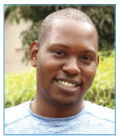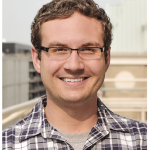SWB Volunteers Share Experiences, Rewards
Matt Brems is a managing partner at the consultancy BetaVector, a member of the distinguished faculty at General Assembly, and the marketing and communications director for Statistics Without Borders. He earned his bachelor’s degree from Franklin College and his master’s degree from The Ohio State University.
In “Statistics Without Borders: Professionals Using Statistics and Data for Social Good” you learned about Statistics Without Borders (SWB) as an organization. You learned who we are, what we do, and how we operate.
One consistent theme from that article was how much we are driven by volunteers. Operating with a zero-dollar annual budget, our 1,600+ volunteers enable us to have the global impact we have.
Whether you’re looking at survey sampling, ensemble modeling, or properties of estimators, a larger sample is (usually) better than a smaller one. We may be dipping into some anecdotal evidence here, but our volunteers can describe a well-rounded SWB experience, and so we asked them to describe their experiences.
Matt Brems: Hello! Thanks for chatting with me. I’d love to hear about your experiences volunteering with Statistics Without Borders, but first—to get a sense of what folks are up to these days—what is your current job title?
 Stephen Godfrey: I’m a technical product manager.
Stephen Godfrey: I’m a technical product manager.
 Smita Skrivanek: I’m the analytics director for my company.
Smita Skrivanek: I’m the analytics director for my company.
 Jennifer Sniadecki: I am a director, statistical programming.
Jennifer Sniadecki: I am a director, statistical programming.
 Raymond Majengo: I am a senior strategic information
Raymond Majengo: I am a senior strategic information
officer.
 Qingyuan Wang: I’m a data
Qingyuan Wang: I’m a data
scientist.
 Mohammed Ali: I’m a
Mohammed Ali: I’m a
software engineer.
 Harold Otoh: And I’m an
Harold Otoh: And I’m an
assistant revenue officer.
Matt: It seems like there’s a lot of different skill sets that you bring to Statistics Without Borders. It would be helpful to hear about your work within SWB. Can you describe the client you worked with and what the project was like?
Stephen: I worked on a project with Client-to-Consultant Bridge to create a minimum viable product that curates a near comprehensive national list of grants and other low-cost funding sources available to small businesses and nonprofits impacted by the COVID-19 crisis in the US.
Jennifer: The project I supported was for Food for Life Global (FFLG). Our team analyzed multiple data sources, including FFLG website traffic, PayPal donations, Twitter feed, Facebook data, and Google Analytics data. (Food for Life Global is a large food distribution organization, serving almost 2 million free vegan meals per day.)
Mohammed: My team worked on a project for Blue Ventures, a marine conservation organization.
Harold: I also worked on the Blue Ventures project!
Mohammed: We worked on a household survey that included assistance in data cleaning, exploratory data analysis, data visualization, sample weighting, and an analysis plan for simple model building. Blue Ventures’ goal was to evaluate the social impact of their work in Madagascar.
Qingyuan: Our project was to utilize Twitter data to understand people’s response to the COVID-19 pandemic. We first scraped tweets, and then built models to predict whether or not that tweet was relevant. This project was completed for the Montgomery County Community Emergency Response Team in Maryland.
Raymond: I worked on a project for Petlanthropy, a pet adoption agency based in the United States. The client wanted to know what factors affected pet adoption, with the objective of increasing the number of pets adopted.
Matt: Now, Smita, you and I are “permanent” volunteers for SWB, so our work isn’t directly focused on one specific project. Instead, can you describe your role and how it fits into the bigger picture?
Smita: I lead the operations directorate within SWB. (Statistics Without Borders has three directorates; the operations directorate builds processes and develops systems to make sure everything gets done as seamlessly as possible.) I’ve acquired and honed a lot of valuable skills, such as setting up and managing new platforms like SharePoint, communicating clearly with and being sensitive to the viewpoints of people from different cultures and backgrounds, and diplomatically handling disagreements among team members. The most rewarding part of this role is seeing how our team’s efforts enable our incredibly talented volunteers to perform great work to help nonprofits do good for the world.
Matt: How about the rest of you? What did you think the most rewarding part of your role was?
Jennifer: Hands down, the gratitude expressed by the client is the most rewarding aspect. It is personally gratifying to receive heartfelt appreciation from the clients. And that client satisfaction feedback reinforces the direct impact the entire SWB organization is making.
Mohammed: The client feedback about my work, including my exploratory data analysis and model building, was very positive and encouraging.
Qingyuan: The most rewarding part of my work was when I found myself supporting my teammates and playing an important role in overseeing the data quality Every time someone shared data, I would carefully explore the data and follow up for further clarification or correction of the data. Even though this job is not as fancy as model building, it is the most fundamental part of the project, so I feel very rewarded for taking on this responsibility.
Stephen: As our country initially responded to one of the most dramatic economic shocks in its history—the disruption precipitated by the COVID-19 pandemic—I, like others, wanted to help my fellow citizens and make a small contribution to restoring some stability. While I expected that contribution to be small, I was hopeful that there was a way to scale it to have a broader impact. This SWB-C2CB project provided such an opportunity by thoughtfully using data-management tools to leverage our work and help a much larger audience of small businesses than would otherwise have been possible.
Matt: What about challenges? What did you think the most challenging part of the job was?
Raymond: Being able to work remotely with different people who don’t possess the same professional background, experience, or ethnicity. But being united with a common goal of serving society, we were able to adjust to a good working environment for all of us.
Smita: Coordinating work among team members who, at one point, spanned four different continents!
Mohammed: Two things. First, the data set was wide and we had to split it by related features and topics. Second, there weren’t many observations, so we had to be careful about our analysis.
Stephen: In my view, the most challenging part of this project was finding a “viable” minimum viable product in the short two-week timeline. As you can imagine, pulling data from a wide range of sources, organizing those diverse data elements, and finding a way to present to small-business owners in a useful and focused way is a challenge. Still, the team was able to find a solution.
Qingyuan: The most challenging part was to figure out the exact format of the end product, especially as the project moved forward. Our original plan was revised, so it was a bit frustrating to give up on what I had done and start in a new direction. However, after discussing with the team and getting more data and clarification from the client, we were able to build the end product.
Jennifer: This project called for a deep dive into Twitter data. Not having a breadth of experience in pre-processing text data was a bit of a challenge. However, this need translated into an opportunity to expand my personal skillset. Using real-world data to refine your skills and learn new techniques, all while providing your client with actionable results, is one of the many benefits of volunteering with SWB.
Matt: Wrapping up, is there anything else you’d like to share about your experiences?
Mohammed: It was very enjoyable and informative to work with a team that has different experiences in different areas to help people in Africa. It is a win-win from every aspect. Thanks for such great opportunities!
Raymond: I am glad that I have served SWB in different capacities such as being a volunteer, being a [project and client manager] … I worked with a fantastic community and learned a lot from them. Being [in my] 20s and being in Africa, SWB has provided me with an eye-opening experience and opportunities around the globe and in my professional life. I owe a lot of my career development to SWB and yet I am happy I am part of a big community that serves the world.
Editor’s Note: Some of the exchanges have been edited for clarity and readability. (Context by the author may be added in parentheses.)


















